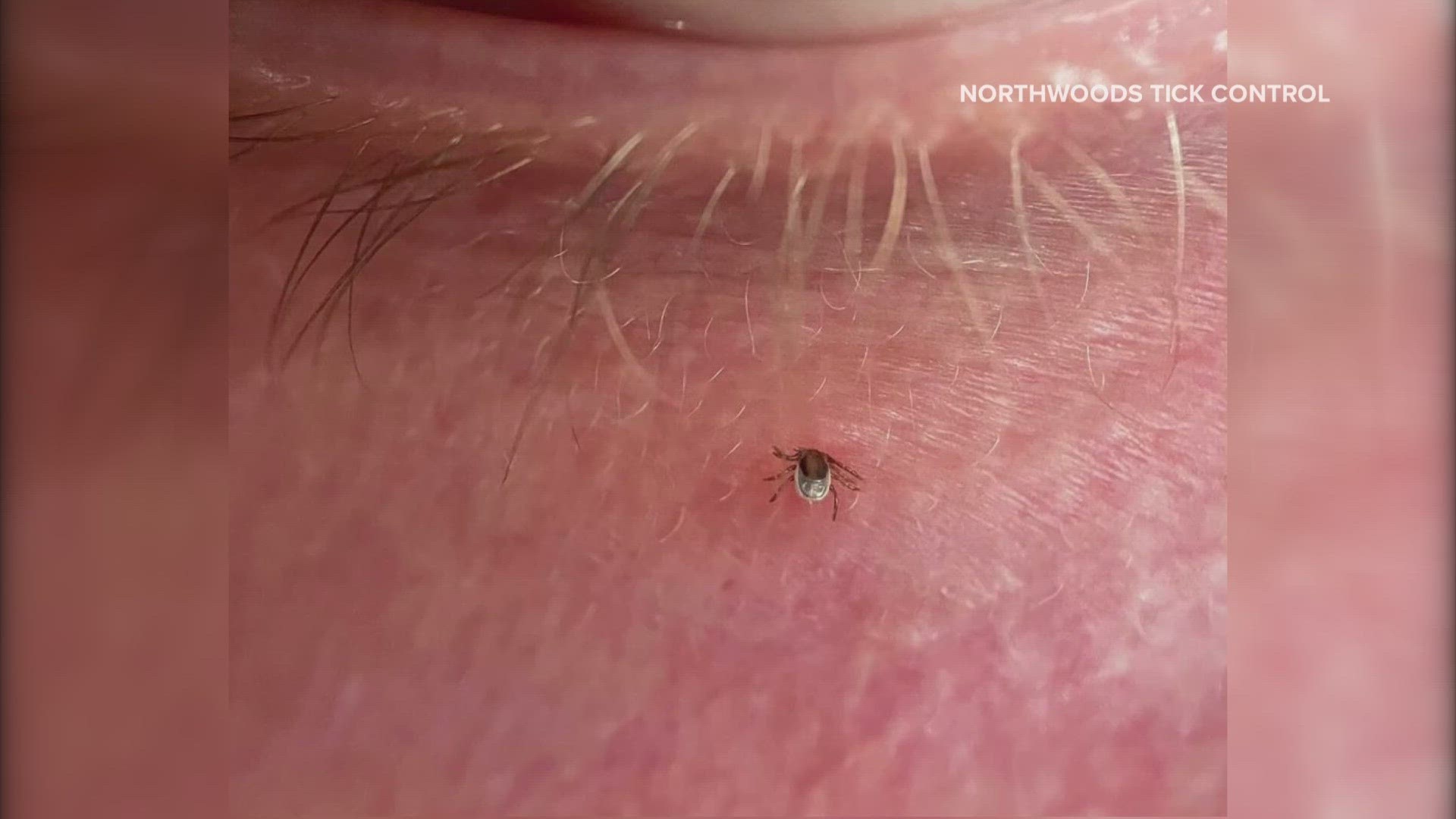PORTLAND, Maine — It's a time of year when exposure to deer ticks is particularly dangerous.
That's because teeny, tiny ticks—known as nymphs—that cause most cases of Lyme disease, are out. About the size of a poppy seed, these parasites are hard to spot, so they can go undetected.
Another concern—the wet temperatures we've been experiencing actually helps ticks thrive. Ongoing wet weather and cooler temperatures are creating ideal conditions for deer ticks, which need 85 percent humidity to thrive.
The ideal conditions come at a time of year when young deer ticks known as nymphs are also becoming more active.
Griffin Dill, the manager of the University of Maine Cooperative Extension Tick Lab, said the parasites are so tiny they are practically invisible, making this part of the tick's life cycle the most lethal.
"That's what makes this stage a particular concern, they can easily go unnoticed as they feed on us, our kids, and our pets," Dill explained.
Nymphs can transmit Lyme and other tickborne illnesses. If they stay latched on undetected, they have more time to transmit pathogens.
UMaine's tick lab identifies ticks sent in from the public for free. For a small fee, ticks are tested for the bacteria that cause Lyme, co-infections, anaplasmosis, and babesiosis.
Researchers have recently begun testing for the Heartland virus, which can cause fever, fatigue, decreased appetite, and headache and can be carried by the Lone Star tick. They can also test for the Powassan virus, which is extremely rare and can lead to severe neurological problems such as brain or spinal cord swelling, and there is no treatment.
"Very low numbers less than a percentage point testing positive for that. We do know that it is a rare illness, a potentially serious illness, but it appears to be rare in the tick population," Dill said.
Annemarie Weymouth's husband Bobby died May 14 after being exposed to the Powassan virus. Annemarie, who did not want to go on camera, has been speaking to national news publications in an effort to raise awareness.
"Obviously, it's hard to share the story, but I think because it's considered such a rare thing, it's important to get the story out there," Weymouth shared.
She said her husband of 23 years didn't find a tick before his symptoms began.
"There are so many people that are living with weakened immune systems, I just feel they need to know to be extra cautious. I wish we had known a little more," Weymouth said.
Annemarie is grateful UMaine researchers now have the Powassan virus on their radar.
Meanwhile, nymphs will be active until August before they turn into adults. While the rainy conditions may be keeping people indoors, experts say always do tick checks, wear protective clothing, and use an EPA-registered repellant.

